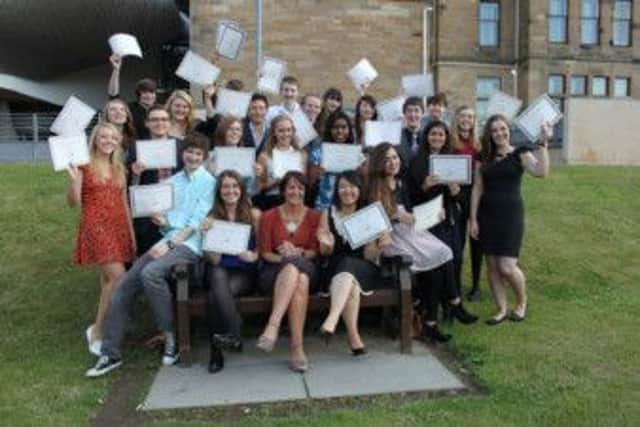Summer school helps poorer pupils into university


Lothians Equal Access Programme for Schools (Leaps), which operates in 59 schools across eight local authority areas, has more than doubled the number of pupils going to university at some of its partner schools since it was started in 1996. The programme offers a seven-week summer school to pupils holding conditional university offers who attended schools where participation in higher education has traditionally been low.
The organisation, which works with Edinburgh’s universities and is similar to initiatives in Glasgow and Aberdeen, has won the backing of the Scottish Government, which is keen to widen access to higher education to those from poorer backgrounds.
Advertisement
Hide AdAdvertisement
Hide AdHowever, despite the success of Leaps, figures show a number of Edinburgh schools are now moving in the wrong direction, sending fewer children to university than in the past.
While the majority of the schools considered most in need of help have increased participation in higher education, three Edinburgh schools – Castlebrae, Craigroyston and Tynecastle – and Whitburn Academy in West Lothian have either seen progress stall or numbers fall.
Last week, 152 students graduated from this year’s summer school, with the hope of turning their conditional offer into a place at university.
Ged Lerpiniere, Leaps’ director, said each student spent the summer studying two academic subjects at a level comparable to the first year at university.
He said: “It definitely prepares them well for university.
“If we were able to do it for everybody, we would, but we only have about 170 places because that’s all the space we have funding for. As a country, our economic problems are not going to be solved by people in low-income jobs. There is potential in every school and it’s just about building that potential.”
But while there has been progress at most of the schools, a number in Edinburgh have struggled due, in part, to falling pupil numbers.
Figures from Leaps show that just 2 per cent of pupils at Castlebrae Community High School went to university in 2012, down from 3 per cent compared to a 1996-2000 baseline figure. At Craigroyston Community High, the figure was 3 per cent, the same as the baseline figure.
While Wester Hailes Education Centre saw an increase, only 5 per cent of its pupils went to university last year. Perhaps the biggest change, however, was at Tynecastle High School, where 17 per cent of pupils went to university in 2012, against 23 per cent in the late 1990s.
Advertisement
Hide AdAdvertisement
Hide AdMr Lerpiniere said: “If you take Wester Hailes, Craigroyston and Castlebrae, the school rolls are small and falling. If you look at the data for these pupils, many are coming out of primary school and don’t have their reading age – there’s only so much we can do.”
Holyrood’s minister for youth employment, Angela Constance, said: “This government is determined to give more students the opportunity to attend university and I am hugely impressed at the work Leaps has led over the summer.”
Majority of graduates finding work
Only half of Scottish university leavers entering work find permanent employment, according to new figures.
More than two-thirds of Scottish graduates finishing their first full-time degree have begun working, slightly higher than the UK average, according to the Higher Education Statistics Agency. But of those only half are in permanent or open-ended positions, with almost a third on fixed-term contracts.
The data was gathered from leavers in the 2011-12 academic year, who were surveyed six months after graduation.
Of the graduates not in work, one in five were studying, mostly in masters-type taught courses. One in 12 were unemployed, lower than the UK average but only slightly lower than the unemployment rate in Scotland as a whole.
Gordon Maloney, president of the National Union of Students Scotland, said: “It’s great to see Scottish graduates doing well, performing slightly above the rest of the UK in terms of employment.”